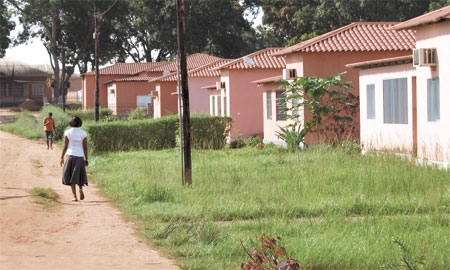Lunda Norte is one of Angola’s 18 provinces. The region is located in the northeast of the country, and shares a long border with the Democratic Republic of Congo.
The name Lunda, which the province shares with its neighbor to the south, Lunda Sul, comes from an ancient kingdom that grew in the region centuries ago and that produced a kind of sculpture that is still very popular with aficionados today.
The province possesses great mineral wealth, much like other countries in the region, such as the DRC and Zambia. Diamonds were first discovered in the region, in Lunda Sul, in 1912, and new mines are still being opened to this day.
In July of last year Endiama and IGE Resources IBE inaugurated the Luxinge diamond mine in the municipality of Nzagi. Luxinge is estimated to hold about 1.1 million carats of rough diamonds, according to the two companies. The new mine represented a step forward after the closing of several mines during the economic crisis of 2008 and 2009.
The regional government, based in the town of Dundo, considers diamonds to be a very important resource, naturally, but Governor Ernesto Muangala likes to point out the region’s outstanding potential in other economic sectors as well.
LUNDA NORTE IS FAMOUS FOR ITS DIAMOND DEPOSITS YET ITS HYDROELECTRIC POTENTIAL IS ALSO WORTH HIGHLIGHTING
‘OUR UNDIVIDED ATTENTION IS FOCUSED ON ENERGY BECAUSE WITHOUT IT NO PROGRESS IS POSSIBLE’
MUCH-NEEDED ACCESS TO HEALTH CARE AND EDUCATION IN LUNDA NORTE IS ALSO BEING ADDRESSED
|
“Diamonds constitute the second major source of the state budget, but in my viewpoint the major wealth of the province is its hydro potential,” Mr. Muangala explains. “We have lots of rivers here and many water sources. In Angola the rivers are born in the center and south and spread out to the northern regions.”
Escom, one of the biggest private investors in Angola, has seen the potential and plans to build three dams in the province with a total generating capacity of 120 megawatts. Escom Energy, Angolan power distribution utility ENE, and the government signed an agreement in 2008 that grants the two companies an exclusive concession covering an area of 5,020 square miles.
The generating plants, when finished, will provide power to mining projects in the region, and to homes and businesses in the central and southern parts of Lunda Norte and in the northern part of Lunda Sul. Once a steady power supply is established in the region, it is expected to spur greater economic growth and permit the opening of more factories and other businesses.
The government is also overseeing the refurbishment and improvement of the hydroelectric generating dam at Luachimo, close to Dundo. The facility was built in 1953 with four turbines, but for years only two of those have been working, depriving Dundo and the surrounding area of a steady source of electricity.
“Our undivided attention is focused on energy because without it no progress is possible,” Mr. Muangala says. “The government has set as a priority the rehabilitation and expansion of its installed capacity. We have a working group set up that will assemble one 15-megawatt turbine in Dundo in order to guarantee the normal supply of energy for the development of all important economic sectors.”
The regional government is working in many different areas to improve the lives of the province’s people. Building up the electrical network is one of them, and another is education. Any economy needs an educated work force to grow, and Mr. Muangala and his team have already expanded the province’s school system substantially.
More than 200 new classrooms have been built in Lunda Norte since the peace agreement in 2002. In those years, more than 170,000 students have been enrolled in school, in a province with a population of more than 1 million.
Primary education facilities have been built around the province, and secondary schools, essentially high schools, have been built in four of the nine municipalities that together make up the province. That might seem like few, until you consider that following independence from Portugal in 1974, and through the civil war that lasted until 2002, there were no high schools in the province.
Access to health care is another area where the government has worked diligently to improve the province’s situation. Since the peace agreement, the province has gained two hospitals and has built a total of 34 new health clinics spread throughout all the municipalities, along with 11 medical centers.
Agriculture is fertile area for investment, because of the province’s rich soil and abundant supply of water. To help spur economic growth in general, the province is eager to welcome foreign investment in any sector and has many advantages compared to other provinces, Mr. Muangala says.
“We have less bureaucracy in the investment process and in access to our territory, we offer an easy implementation process regarding contracts, we offer transparency in dealing with the documentation and finally faster legal proceedings.”

0 COMMENTS